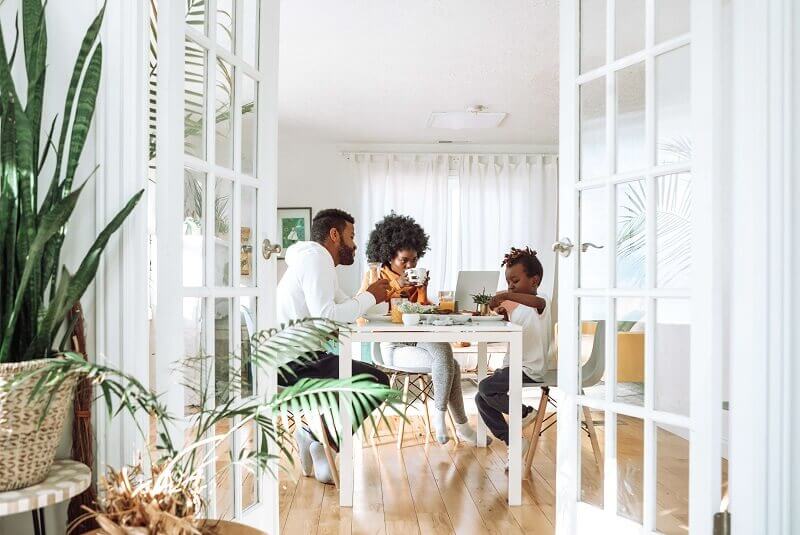
The Importance of Creating a Loving and Inviting Home Environment
A home is more than just a physical space; it is a sanctuary where we feel safe, comfortable, and at ease. It reflects our personalities, values, and experiences, serving as a backdrop for our daily lives and cherished memories. The significance of home extends beyond its four walls; it encompasses the relationships we nurture and the feelings we cultivate within that space. Creating an inviting and loving environment is essential for our well-being, as it can positively influence our mood and overall quality of life. With the right design, decor, and personal touches, a home can transform into a haven of comfort and happiness. In this article, we will explore various aspects of home that contribute to its importance, from interior design to emotional connections. Ultimately, understanding the essence of home can help us create spaces that resonate with love and warmth.
Designing a Functional Space
Creating a functional living space is essential for maximizing comfort and efficiency in our daily lives. A well-designed home should cater to our needs, incorporating elements that enhance our routines and activities. This involves considering the layout, furniture arrangement, and storage solutions that suit our lifestyle. For instance, an open floor plan can create a sense of spaciousness, making it easier to navigate between rooms. Additionally, selecting multifunctional furniture can help save space while providing utility, such as a sofa bed or an expandable dining table. By prioritizing functionality, we can ensure our home meets the demands of our busy lives while remaining a comfortable retreat.
Incorporating Personal Touches
Personalizing our homes is a vital aspect of creating a space that feels uniquely ours. By incorporating elements that reflect our interests, experiences, and values, we can create an environment that resonates with who we are. This can include displaying artwork, family photos, or souvenirs from our travels, all of which contribute to the character of our home. Additionally, using color schemes and materials that evoke positive emotions can enhance the overall atmosphere. For example, warm tones can create a cozy and inviting ambiance, while bright colors can energize a space. The goal is to create a living environment that feels authentic and represents our personal journey, making our home a true reflection of ourselves.
Cultivating Emotional Connections
The emotional connections we foster within our homes play a significant role in shaping our well-being. A loving home environment encourages open communication, support, and nurturing relationships among family members. This sense of belonging is crucial for our mental and emotional health, as it provides a foundation for personal growth and development. Regular family activities, such as game nights or shared meals, can strengthen these connections, creating lasting memories and a sense of unity. Moreover, maintaining a positive atmosphere can help mitigate stress and anxiety, allowing everyone to feel valued and appreciated. By prioritizing emotional connections, we can cultivate a harmonious home life that nurtures our spirits.
Creating an Inviting Atmosphere
An inviting atmosphere is key to making a house feel like a home. This can be achieved through thoughtful design choices, such as using comfortable furnishings, soft lighting, and pleasant scents. Cozy textiles like blankets and cushions can encourage relaxation, while ambient lighting can create a warm, welcoming ambiance. Additionally, incorporating elements from nature, such as plants and natural materials, can enhance the overall environment. The presence of greenery not only beautifies the space but also promotes a sense of tranquility and well-being. By focusing on creating an inviting atmosphere, we can ensure our home remains a place where friends and family feel welcome and at ease.
Prioritizing Sustainability in Home Design
As we create our homes, it is essential to consider sustainability and environmental impact. Adopting eco-friendly practices in home design and maintenance can benefit both our living space and the planet. This includes using sustainable materials, such as reclaimed wood or bamboo, which reduce our ecological footprint. Additionally, incorporating energy-efficient appliances and fixtures can help lower utility costs while minimizing energy consumption. Implementing practices like composting, recycling, and reducing waste can further contribute to a more sustainable lifestyle. By prioritizing sustainability in our home design, we can create a space that not only enhances our well-being but also respects and protects the environment.
In conclusion, a home serves as a vital foundation for our well-being, shaping our experiences and relationships. By designing functional spaces, incorporating personal touches, cultivating emotional connections, creating inviting atmospheres, and prioritizing sustainability, we can enhance our living environments. Ultimately, our homes should be a reflection of who we are and a source of comfort and happiness. As we strive to create loving and inviting spaces, we can ensure that our homes remain cherished sanctuaries that nurture our spirits and foster meaningful connections. By understanding and appreciating the importance of home, we can transform our living environments into havens of love and warmth.
- The Importance of Creating a Loving and Inviting Home Environment - 17th October 2024
- Non GamStop Casinos: A Safe Haven for UK Gamblers - 21st September 2024
- The Importance of Listening to Your Body’s Signals - 8th April 2024
You May Also Like

The Secrets to Looking Smarter In Pictures and Feel Awesome
28th June 2019
5 Ways to Make Your Profile Stand Out on LinkedIn and Get Recruited
2nd July 2024

